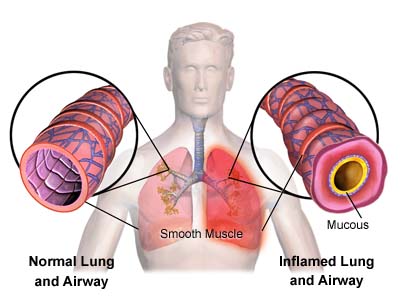According to the American College of Sports Medicine (ACSM), asthma is: “a syndrome characterized by reversible obstruction to airflow and increased bronchial responsiveness to a variety of stimuli, both allergic and environmental”. In other words, asthma is a chronic inflammation of the bronchi (airways) in the lungs.
Asthma varies from person to person and ranges in severity from mild to severe. It is induced by different stimuli, such as allergens or exercise. The stimulus that brings on an asthma attack in a particular individual must be known and considered when establishing an exercise regimen for that individual.
Exercise capacity can either be limited as a result of having asthma, or exercise can in fact induce an attack, thereby exacerbating the condition. This may cause individuals to avoid exercise wherever possible.
The symptoms of exercise-induced asthma include the following (ACSM):
· Wheezing· Coughing
· Shortness of breath
· Chest discomfort
Individuals with well-controlled exercise-induced asthma are able to exercise with little or no symptoms. The training effects will be the same as in individuals who do not have asthma. Thus, these individuals should follow the same exercise guidelines as those for individuals who do not have asthma and thus should include cardiovascular, strength and flexibility exercises into their routines. In more severe cases, where exercise intensity is limited by symptoms, individuals can concentrate on improving endurance, rather than high-intensity fitness and should also include resistance and flexibility exercises.
It is important to realise that one can and should continue to lead a very healthy and active lifestyle, even if they have been diagnosed with asthma. You must consult your doctor with regards to exercise and to take the medication that has been prescribed by your doctor in order to keep the condition under control and to reduce symptoms during exercise. If you have asthma and don’t know how to start an exercise programme, starting off with a biokineticist can point you in the right direction.


